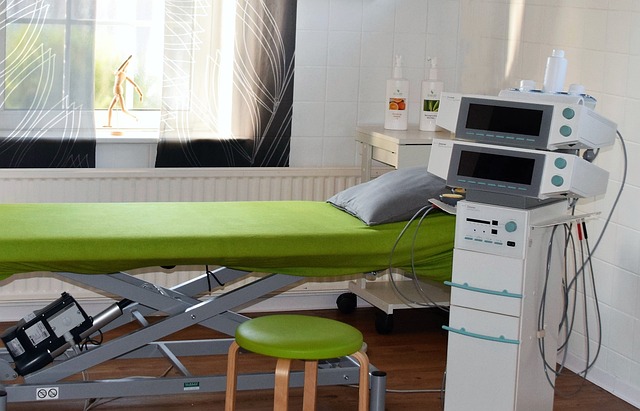Sports injuries can happen to anyone who loves to be active, whether you’re a pro athlete or just enjoy moving around. But what matters is how you get better. This easy-to-follow guide will take you through the important steps to recover after a sports injury. We’ll help you learn about your injury, set goals, make a plan, and keep an eye on your progress. So, let’s get started!
Table of Contents
Understanding the Injury
Knowing about your injury is important to start your recovery journey. Think of it as understanding your opponent before making a game plan. Sports injuries can be different in how bad they are, so it’s crucial to know what you’re up against. Get help from a medical expert to figure out your injury. Just like a ship needs a skilled captain to sail safely, a doctor will lead you to the right diagnosis, which is important for a good recovery plan.
Consultation with a Healthcare Professional
Talking to a healthcare pro, such as a Goshen physical therapy specialist, is like seeking guidance from an experienced guide before embarking on a challenging journey. They act as your compass, directing you toward the right path, ensuring you receive appropriate care, and helping you understand your injury better. Seeking expert advice is particularly crucial, especially when dealing with sports injuries. A sports medicine doctor or a physical therapist at Goshen Physical Therapy can provide you with the right guidance, assess the severity of your injury, and recommend the most effective steps to take.
During your initial visit to Goshen Physical Therapy, the healthcare expert will thoroughly examine your injury. They may conduct physical assessments and even employ diagnostic tools like X-rays or MRIs to pinpoint the issue accurately. This thorough evaluation assists you in determining the necessary steps for a successful recovery.
Setting Realistic Goals
Setting realistic rehabilitation goals is the next vital step in your journey to recovery. Imagine these goals as achievable milestones along your path to healing. They provide you with direction, motivation, and a clear sense of progress. Just as it’s unrealistic to expect to reach your destination in a single leap, setting unattainable goals can lead to frustration and setbacks. Therefore, it’s crucial to establish specific, measurable, and time-bound goals.
The concept of setting SMART goals comes into play here. SMART stands for Specific, Measurable, Achievable, Relevant, and Time-bound. Specific goals are clear and well-defined. Measurable goals allow you to track your progress quantitatively. Achievable goals are realistic and within reach. Relevant goals are aligned with your rehabilitation needs and objectives. Time-bound goals have a defined timeframe for achievement. Applying the SMART criteria to your rehabilitation goals ensures they are practical, motivating, and conducive to your recovery.
Developing a Rehabilitation Plan
Making your own recovery plan is like making a map for a house you’re building. Architects plan everything to ensure the house is strong and safe. Your recovery plan needs the same care. It’s like a map showing what exercises, treatments, and steps you need to fix your body.
A healthcare pro, like a physical therapist, will help you make this plan. They’ll make sure it’s just right for your injury. Here’s what the plan usually includes:
Here are the important parts of your recovery plan:
1. Exercises: These are special moves that help your muscles and body get better. Your therapist will show you how to do them right.
2. Rest: Your body needs time to heal. Your plan will include breaks between exercises to avoid pushing too hard.
3. Changing Activities: Depending on your injury, some activities might need to change or stop. Your plan will tell you what to do to avoid making things worse.
4. Extra Help: Sometimes, you might need more than just exercises. Your plan could include things like special therapy, medicine, or even surgery if it’s necessary.
This plan is like a roadmap made just for you. It shows how to get better step by step, and it’s where your recovery begins.
Home Care and Exercises
Doing your exercises at home is a lot like practicing a musical instrument. Just like getting good at playing music takes practice and sticking to it, doing your rehab exercises the right way and regularly is super important for getting better. Think of your exercises like musical notes that combine to make a great tune – your recovery!
Your physical therapist or doctor will give you a set of exercises to do at home. It’s important to follow their instructions closely because doing the exercises correctly is the key to improving. Stick to the schedule they give you, and keep a journal to track how you’re doing and ensure you’re on the right track. If any exercise hurts or feels strange, let your healthcare provider know so they can make changes if needed.
Nutrition and Hydration
Proper nutrition during recovery is similar to fueling a vehicle for a long journey. Your body requires the right nutrients to heal and regenerate tissues effectively. Think of your balanced diet as high-quality fuel, essential for maintaining your body’s engine in peak condition. Staying hydrated is like ensuring your engine has enough coolant to prevent overheating.
A balanced diet rich in vitamins, minerals, and protein is crucial for healing. Nutrients such as vitamin C, D, calcium, and protein play vital roles in tissue repair and recovery. Consult with a healthcare provider or nutritionist to create a dietary plan tailored to your needs and recovery goals.
Staying adequately hydrated is equally important. Proper hydration supports various bodily functions, including circulation and tissue repair. Ensure you drink an adequate amount of water throughout the day to aid in your recovery.

Rest and Recovery
Including rest and recovery in your rehab plan is like giving your body the break it needs to fix itself. Just like machines need some time for maintenance to work their best, your body needs time to recover from all the work during rehab. Think of rest as the important time when your body returns to good shape.
Getting enough rest is important in your recovery. It helps your body fix any damage and reduce swelling. Getting a good night’s sleep is a must for getting better. Rest also means not pushing yourself too hard and letting your body heal between exercises.
Monitoring Progress
Keeping an eye on your progress is like using a map and GPS while hiking to ensure you’re going the right way. It tells you how well you’re doing and helps you know what to do next. There are a few ways to do this during your rehab:
– Rehabilitation Journal: Think of it like a diary where you write down your exercises, any pain, and how you felt each time. It’s like keeping track of how far you’ve hiked.
– Follow-Up Appointments: These are like check-ins with your healthcare provider. They check how you’re doing and adjust your plan if needed.
– Watch for Changes: Pay attention to any new pain, problems moving, or discomfort. Tell your healthcare provider right away if something doesn’t feel right.
– Measurements: Sometimes, they measure how strong or far you can move. It’s like using numbers to see how you’re improving.
By watching your progress closely, you and your healthcare provider can work together to ensure you’re on the right path and getting better. It’s like having a good guide on your hike to reach your goal safely.
Conclusion
To summarize, starting rehab after a sports injury is a big deal that needs careful planning, effort, and help. Like any trip, it starts with one step; your journey to getting better begins with understanding your injury and getting expert advice. Setting doable goals, making a plan just for you, and doing your exercises and self-care regularly are the keys to getting better.
Remember, eating right, drinking enough water, and getting good rest are really important for healing. And remember to keep an eye on your progress. Your healthcare provider will be your guide on this journey to full recovery.
Stay committed, be patient, and trust the process. With the right plan and determination, you can beat your sports injury and regain your active life even stronger.
Featured Image by Jenny Friedrichs from Pixabay




